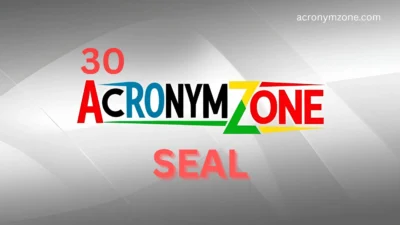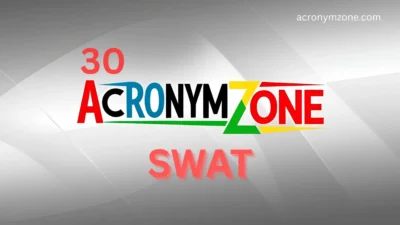The acronym ICE FLAGS is most often used in psychology and trauma-informed care—especially in discussions around emotional manipulation, grooming, and abuse recognition.
It helps identify warning signs of emotional danger that may not be obvious at first glance.
But what if you’re writing or speaking to an audience that needs gentler, clearer, or even more context-specific language?
In this post, we’ll first unpack what ICE FLAGS stands for and explore its deeper meaning. Then, you’ll get 30 thoughtful alternatives—from direct to diplomatic—each tailored to tone, audience, and context.
🧠 What Does ICE FLAGS Stand For?
ICE FLAGS is a trauma-informed acronym designed to flag manipulative or harmful behavior in relationships or social dynamics. It stands for:
- Isolation
- Control
- Enmeshment
- Fear
- Loyalty (coerced)
- Anger
- Guilt
- Sexual pressure
These are common tactics used by abusers or manipulators to control, confuse, or exploit others—especially in early-stage relationships or institutions.
Key Nuances of ICE FLAGS:
- Focused on emotional safety
- Emphasizes subtle psychological cues
- Applies to interpersonal, romantic, family, or group dynamics
- Often used in educational or therapeutic settings
Because the term can be intense or clinical, there are times when softer language or contextualized alternatives are better suited for awareness, writing, or conversation.
🚩 30 Alternatives to “ICE FLAGS” (and When to Use Them)
These terms help you signal red flags, power imbalances, or emotional manipulation—tailored to your tone and audience.
🔴 Direct and Clear Alternatives
1. Red Flags
Use for: Everyday conversations or dating advice.
Example: That level of jealousy is a red flag.
2. Warning Signs
Use for: Professional, educational, or parental contexts.
Example: Watch for warning signs of controlling behavior.
3. Manipulative Tactics
Use for: Describing behavioral patterns.
Example: Gaslighting is a manipulative tactic.
4. Toxic Traits
Use for: Social media or relationship advice.
Example: Blame-shifting is one of their toxic traits.
5. Abuse Indicators
Use for: Clinical or support group settings.
Example: Isolation is a key abuse indicator.
🟠 Subtle, Diplomatic Alternatives
6. Concerning Behaviors
Use for: Talking to someone in a sensitive situation.
Example: Some of his actions are concerning behaviors.
7. Emotional Red Flags
Use for: Emphasizing psychological danger.
Example: Guilt trips are emotional red flags.
8. Unhealthy Patterns
Use for: Counseling or recovery settings.
Example: They keep repeating unhealthy patterns.
9. Boundary Violations
Use for: Describing enmeshment or over-control.
Example: Constant check-ins can be boundary violations.
10. Power Imbalances
Use for: Situations involving coercion or control.
Example: That dynamic reveals a power imbalance.
🟡 Therapeutic or Educational Terms
11. Attachment Issues
Use for: Describing enmeshment or dependency.
Example: Over-clinging can reflect attachment issues.
12. Gaslighting Patterns
Use for: Psychological manipulation.
Example: He denies things that happened—that’s gaslighting.
13. Codependency Signals
Use for: Family therapy or relationship discussions.
Example: Putting their needs last shows codependency signals.
14. Grooming Behaviors
Use for: Abuse education and prevention.
Example: He built trust fast—classic grooming behavior.
15. Emotional Entanglement
Use for: Subtle signs of enmeshment.
Example: Their lives feel emotionally entangled.
🟢 Gentle, Conversation-Opening Phrases
16. Something Feels Off
Use for: When intuition is your first clue.
Example: I don’t know why, but something feels off.
17. Too Much, Too Soon
Use for: Describing love bombing or intensity.
Example: He said “I love you” on the second date—too much, too soon.
18. Not Respecting Boundaries
Use for: Discussing control or possessiveness.
Example: She texts nonstop—he’s not respecting your boundaries.
19. Walking on Eggshells
Use for: Describing fear or tension.
Example: You shouldn’t be walking on eggshells around them.
20. Always Needing Control
Use for: Labeling coercive dynamics.
Example: He always needs to control what she wears.
🔵 Social Media or Youth-Friendly Language
21. Vibes Are Off
Use for: Casual or meme-style red flag alerts.
Example: He snapped at the waiter—the vibes are off.
22. Emotional Manipulation
Use for: TikTok/IG mental health content.
Example: Love bombing is emotional manipulation.
23. Sketchy Energy
Use for: Informal but expressive.
Example: He gives off sketchy energy.
24. Toxic Dynamics
Use for: Naming full relationship patterns.
Example: They’re stuck in a toxic dynamic.
25. Emotional Blackmail
Use for: Specific pressure-based control.
Example: “If you leave, I’ll hurt myself”—that’s emotional blackmail.
🟣 For Empowering Reflection or Education
26. Inner Alarm Bells
Use for: Encouraging self-trust.
Example: If your inner alarm bells ring, pay attention.
27. Behavioral Flags
Use for: Academic or organizational materials.
Example: Jealousy and guilt trips are behavioral flags.
28. Early Indicators
Use for: Preventive education.
Example: Isolation is an early indicator of control.
29. Emotional Triggers
Use for: Trauma-informed contexts.
Example: This may activate emotional triggers—approach gently.
30. Situational Red Flags
Use for: When behavior is context-specific.
Example: The pressure he applied was a situational red flag.
🧭 How to Choose the Right Alternative
| Audience | Best Alternatives | Why It Works |
| General public | Red Flags, Toxic Traits, Warning Signs | Easy to understand |
| Survivors or therapy | Boundary Violations, Grooming Behaviors, Codependency Signals | Trauma-aware and specific |
| Teens/Young adults | Sketchy Energy, Vibes Off, Too Much Too Soon | Relatable and modern |
| Academic or clinical | Behavioral Flags, Power Imbalance, Attachment Issues | Professional and neutral |
🌍 Cultural & Emotional Sensitivity
- “PHAT” may be light or fun, but “ICE FLAGS” is serious. It’s critical to match your tone to your audience’s emotional readiness.
- When discussing emotional safety, use clear yet compassionate language.
- Be mindful not to trivialize trauma when adapting these terms for casual use.
✅ Final Thoughts: Recognizing Flags Without Raising Alarm
The acronym ICE FLAGS is powerful—but not always the best fit for every setting. With these 30 flexible alternatives, you can speak about emotional safety with clarity, compassion, and cultural awareness.
Whether you’re writing, educating, or just trying to help a friend, the right words can make all the difference.




